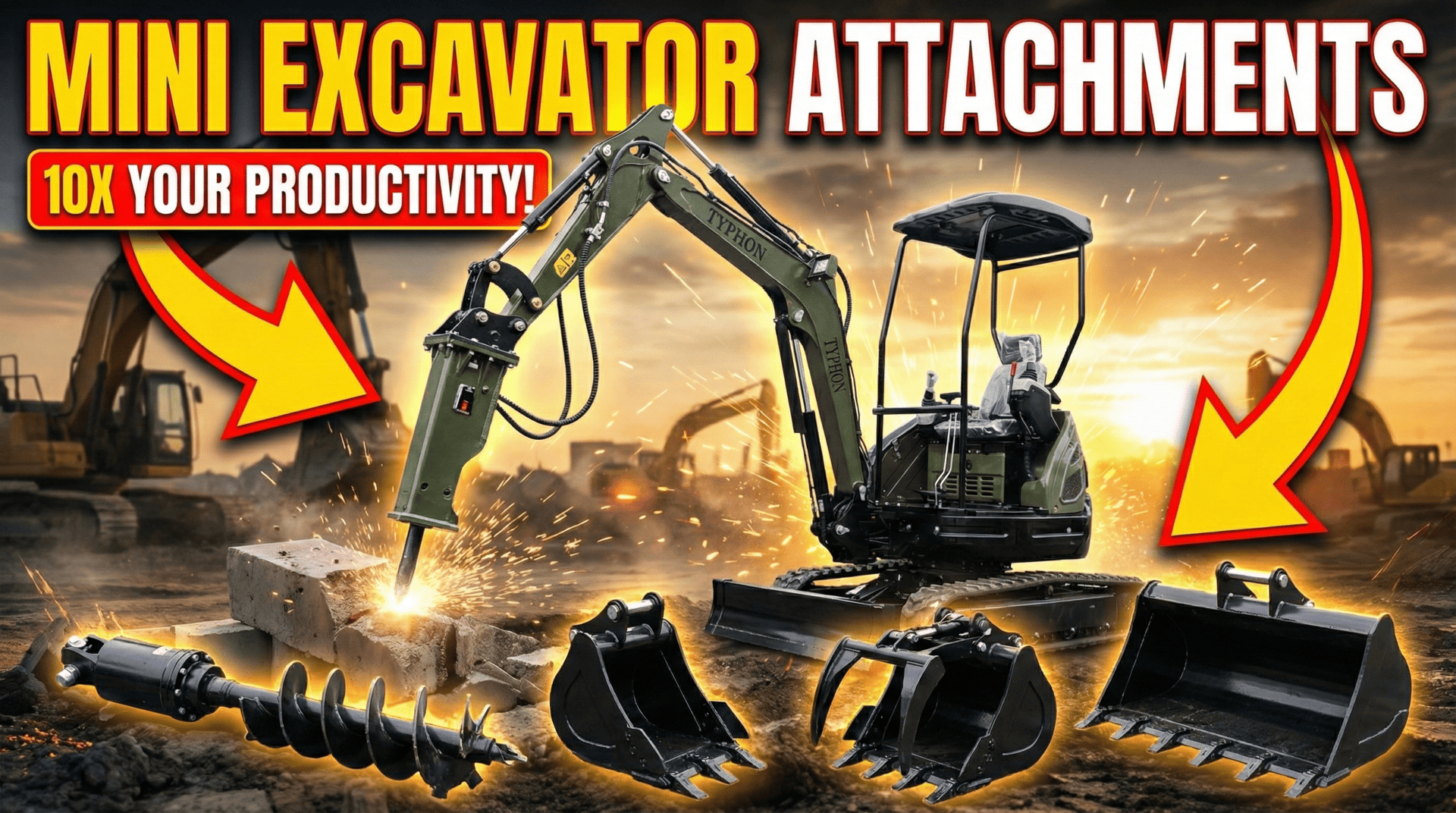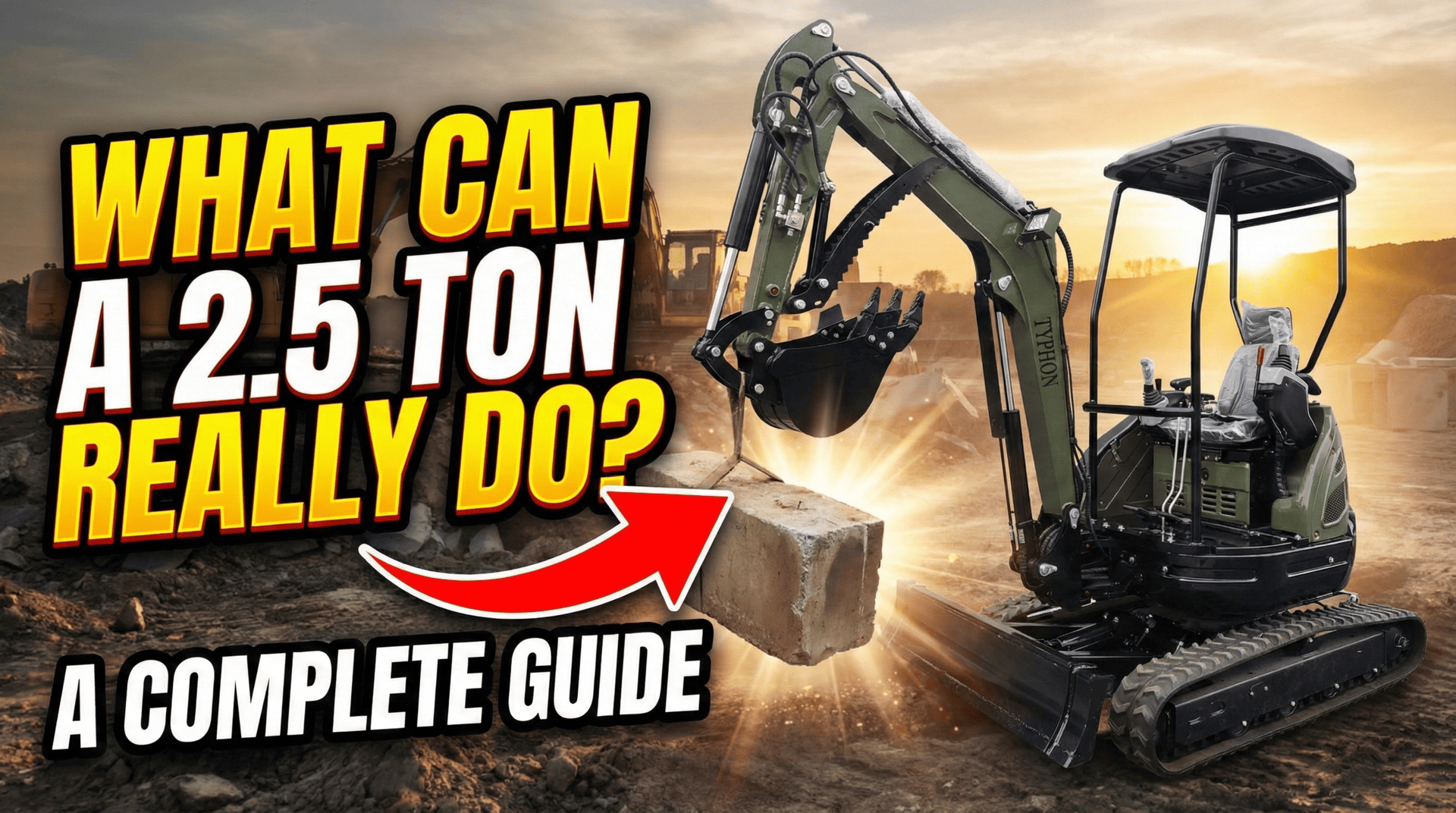Mini Excavator Seven Expert Techniques
Mini Excavator 7 Expert Techniques: Mini excavation tools are flexible. Other industries like construction, landscaping, and other uses them. To fully use certain talents, you have to choose them.
Professional mini excavator operating advice is provided in this article. We will discuss basic controls for advanced excavation. These tips will improve your operator skills independent of experience. These techniques increase mini excavator lifetime, production, and safety.
Dig in and learn how to succeed with a little excavator.
Mini Excavators’ Foundations – Everything You Need To Know
The foundations define successful mini excavator operation. Learning advanced techniques requires a knowledge of these fundamental ideas first. Every landscaping or construction project starts with this important phase.
Control your little excavator. The features of any machine might affect its operation. For specifics, see the handbook.
Managing big stuff calls for great safety. One has to abide by minimum safety criteria. These systems protect machinery and operators.
Not formality; training is necessary. Good training simplifies procedures and helps to avoid mistakes. Knowledge helps operators enhance small excavator performance.
Models vary in their control mechanisms. Knowing these differences increases operator effectiveness. This knowledge greatly increases site output.
Keeping these ideas in mind will help you get there. They provide the foundation for mini excavator competency.
Start with the Basic – Learn the Controls
Learn the controls of a mini excavator before running it. Model setups differ. Smooth functioning depends on knowing these parameters.
Practice basic operations from the operator’s seat. This increases self-control and confidence. Mock projects might teach the machine.
Training increases safety and production. Understanding the controls lowers mishaps. Increasing familiarity enhances operational performance.
Inspections Prior To Starting Operations
Pre-operative inspections are really vital. Inspections find likely flaws before they become issues. They provide seamless and safe operations.
Check hydraulic and engine lubricant before use. Look for security and utility in every attachment. Look for any project-harming flaws.
Quickly address results to prevent equipment malfunction. With frequent inspections, mini excavators last longer. Under their direction, every department runs effectively.
Design Your Excavator Path and Work Area
Efficiency in the workplace depends on its planning. A smartly chosen site prevents surprises. It sets a project for success.
Clearly specify the sites of excavation. Safety calls for avoiding underground utilities and projects. Good planning helps to reduce accidents.
Chart the route of your tiny excavator. Path planning increases output while saving time. It also less disturbs the ground.
Knowledge of Digging and Excavation
Any mini excavator project depends on excavation. Effective excavation techniques speed up projects and reduce labor costs for 1-ton mini excavator. Learning these methods optimizes your little excavator.
Efficiency of digging relies on the bucket. Select the suitable bucket for the work. Make sure the project scale and soil suit it.
Correctly approaching the dig site is really vital. Task difficulty and duration change with angle of approach. Excavating starts best on level ground.
One also depends on depth perception. Regular inspections prevent overdigging. Practice saves time and corrective work.
Keep up consistent excavation. Rushing leads to uneven digging and errors. With constant speed, control and accuracy increase.
Efficient mini excavator usage decreases wear. Longer life derives from less machine strain. Regularity increases accuracy and speed.
Crucially, you must know the load capacity of your equipment. Overloading might topple the excavator. Always refer to manufacturer weight recommendations.
Mastery of excavation calls for more than just equipment operation. It calls for capable administration, planning, and observation. These will be automated in time.
Successful Excavation
Any digging calls an effective technique. First, ground the little excavator on firm ground like . The stability helps to preserve precision and control all during operation.
Choose the suitable angle of excavation. An optimal angle facilitates performance. Change to maintain effectiveness of process.
Look at the topography. Terrain might call for many techniques. Gradual, careful digs in soft soils help to avoid mishaps.
Keep the bucket close to the gearbox. This improves stability and lowers excavator strain. It ensures good and efficient load control.
Review and alter your method of digging often. Evaluation helps to enhance procedures and practices. Constant improvement increases production and safety.
Trenching Best Guidelines
Trenching calls for precision. Steer clear of trench ends to prevent collapses. In many procedures, safety comes first above speed.
Important are neat, vertical trench walls. The clean margins help to prevent trench integrity loss and soil collapse. Consistency is aided by visual inspection.
Swing sparingly to save time. Regular trenching wastes time and fuels. A straight, deliberate swing maximizes efficiency and saves energy.
Professional Leveling and Grading
Leveling and grading a mini excavator need for accuracy. Surface preparation for gardening or building calls for various steps. Well-graded sites help to save materials and time.
One has to start with a plan. Well defined plans help to get level or slope. Site stakes and lines provide graphic direction.
Master small excavator control. Improved results arise from fluid joystick motions. Use precise movements to raise grade.
Evaluate improvement regularly during leveling and grading. This guarantees the surface matches the design. Regular reviews prevent major changes.
With the right accessories, grade simpler. Use blades or buckets particular to your tasks. Attachments increase output and work quality.
Grading Made Made Correct grading calls for accuracy in each direction. Start with correctly delineating the region. Grading is governed by exact marks.
Apply the excavator depth control. This method keeps depth intact. It lowers human mistake and increases accuracy.
Slowness and constant motions help surface control. Unfair grading might result from sudden changes. A methodical approach guarantees uniformity of grades.
Cut Down Ground Invasions
Minimizing ground disturbance will help to preserve the ecology. Study the ground and plants first. Change your approach to fit the circumstances.
Rubber tracks reduce soft ground effect. They stop tearing and sinking. This preserves the ground in natural state.
Keep your workstation compact and cut off pointless movement. Movement may change the terrain. Organize your efforts to reduce these effects and protect site integrity.
Working in challenging terrain
Running a 1 ton mini excavator over challenging ground calls for accuracy. Different challenges come from uneven ground, slopes, and confined spaces. Every terrain calls for particular strategies for effective and safe use.
Check the ground before starting work. Crucially, one must know the hazards and peculiarities of the terrain. This assessment helps with both design and implementation.
Match surrounds to excavator settings. The job should match the mode specifications. These changes increase machine efficiency and stability.
Prioritize safety in difficult terrain. Stability could be affected by slopes and rough ground. Act farther to avoid losing control or tipping.
Key is good ground crew communication. Well defined policies guard everyone. A united team can easily overcome unexpected difficulties.
Regularly check the weather. Rain or snow might drastically affect terrain safety. Keep employees safe by being vigilant about the weather.
Slope and uneven terrain techniques
On slopes, mini excavators should be placed properly. Face the slope either rising or lowering. This posture increases control and helps to prevent lateral tilting.
Move gently to prevent instability. Rushing increases chance of mistake and accident. Controlled movements help to make operation more precise and safer.
Use the correct attachments for slope work. Attachments provide flexibility and support. These will help to stabilize the machine and increase work performance.
Tight Areas and Urban Space
Planning and carrying out on few sites need for carefulness. Cities limit access and movement. For these uses, think of small, portable excavators.
In confined areas, give visibility and attention top priority. Set up cameras and mirrors to improve eyesight. These help site safety and obstacle avoidance.
Increase flexibility with mini excavator attachments. Particularly useful in confined areas are specialized instruments. This adaptability improves close-by excavation.
Attachment Use and Organization
Attachments help mini excavators to be flexible. They permit the machine to do several tasks. Good use helps to expand work scope and efficiency.
Before selecting attachments, consider project requirements. Every action might call for various tools. Choice influences performance and outcomes.
One requires regular attachment maintenance. Tools kept properly last more. Maintenance reduces downtime and increases production.
Training operators depends on attachments. Key is knowledge of tool capabilities and constraints. Good operators make great use of accessories.
Think about purchasing many accessories. Instruments close projects with less changes needed. This adaptability saves money and time at business.
Maintain creative devotion to ideas. Innovations may support activities. Modern instruments might increase competitiveness and efficiency.
Attaches Boost Versatility
Attachments offer mini excavators enormous range. Jobs are created by bucket for mini excavator, breakers, and grapples. These devices enable one machine do numerous tasks. Select attachments depending on the project goals. Demolition calls for more big tools. For smaller, more exact work, certain attachments might be required. Attachments usually serve many objectives. Grade and dig using a tilting bucket. Versatility tools improve excavator adaptability.
Fast, Safe Attachment Modifications
Attachments have to be safely and quickly altered. Though slow, manual corrections are very vital. Modern technologies speed up the process. Operators also have to learn safe attachment. Correct technique prevents damage to tools and injuries. Training enables safer and quicker changes in attachment. This company runs with delays and mistakes less. Well-prepared sites facilitate smooth transitions.
Maintenance Plans and Safety
Mini excavators require performance and safety maintenance. Regular inspections avoid unexpected malfunctions. Equipment lifespan is extended. Plan repairs. Follow manufacturer instructions. Effective treatment involves frequent visits. Safety measures must be observed. They protect workers and the workplace. Train all workers in safety.
Be alert on-site. Check dangers first. Be alert to prevent mishaps. Surgery aftercare includes mini excavator storage and cleaning. These actions protect machines. Always check attachment wear.
Fix issues immediately. Proper care keeps them safe and functional. Keep maintenance records. Precision notes facilitate machine monitoring. They give clear historical records for future use. Remember that well-maintained equipment costs less and performs better.
Regular maintenance
Maintenance checks are really vital. Begin daily inspections before use. These checks find early on minor mistakes. Check hydraulic and engine oils levels. At correct settings, performance is maximized. Never ignore weird noises or leaks. Check and change the filters. Filters kept clean help engines run. They increase longevity and effectiveness.
Situational awareness and safety
Unchangeable safety protocols. Follow them closely, operators. Safety locks the surroundings and lowers incidence. Give staff members safety equipment. boots, gloves, and helmets needed. Wearing protective gear increases safety. Situationally awareness counts. Always be alert for surrounds. Be alert to threats and changes.
Hygiene and Storage Following Surgery
Every use of a mini excavator should result in cleaning. Spotless surfaces. Good cleaning prevents corrosion and wear. Keep tools covered. Protection from the elements lasts. Better still save within. Keep accessories fastened. Good storage reduces damage and loss. Under cautious handling, they are more beneficial.
Modern and environmentally friendly approaches
Learning sophisticated techniques increases mini excavator performance. Particularly difficult jobs like underwater excavation need for experience. Standard procedures need to evolve. Modifications are required. Above all, we have to be flexible. Context affects tactics.
One should be kind to the surroundings. Policies must be sustainable. It lessens environmental effect. One has to obey emission rules exactly. Ignoring means you run penalties. It influences communal ties.
Purchase greener technology. One might get aid with biodegradable oils. They improves the surroundings. One has to be always learning. Track changes in business affairs. Learning a skill enhances lifelong performance.
Underwater excavation: particular issues
Underground excavation is challenging. One must plan and be accurate. Equipment has to be ready for moisture. Make sure attachments are waterproof. They strengthen and safeguard effectiveness. Important are careful sealing and maintenance. Underwater view is not very good. Operators need greater expertise and attentiveness. Sonar and cameras support navigation.
Green Techniques and Emission Guidelines
Starting small, changing to greener lifestyles choose low-emission fuels and lubricants. Their environmental effect decreases. Furthermore, beneficial is regular maintenance. From a tuned engine, less comes out. This approach meets efficiency and environmental criteria. Monitor political developments. Quickly pick up new emission guidelines. These criteria include legal as well as ethical ones.
At last
Learning small excavator techniques could change a project. These expert techniques increase effectiveness and help to reduce costs or helps you to choose the best mini excavator rentals. Learn constantly and practice safety. This extends operator safety and the lifetime of tools.









